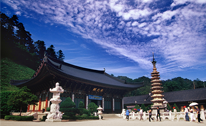 |
|
Woljeongsa Temple
Woljeongsa is a head temple of the Jogye Order of Korean Buddhism, located on the eastern slopes of Odaesan in Pyeongchang County, Gangwon Province, South Korea. Woljeongsa was founded in 643 by the Silla monk Jajang.
|
|
|
|
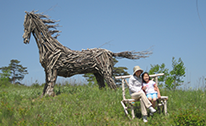 |
|
Uiyaji Wind Village
Located on the highlands of Pyeongchang county, the Uiyaji Baram Maeul (Uiyaji Wind Village) is a mountain village situated on top of Daegwalleyong between 750 and 800 meters above sea level. Because of its abundant early winter snowfall, it was also one of the first places for skiing in Korea. |
|
|
|
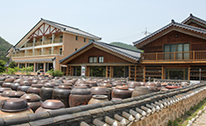 |
|
Jeonggangwon (Korea Traditional Food Culture Experience Center)
The Traditional Korean Food Experience Center is dedicated to preserving, promoting, and developing Korean food culture by offering a number of experience programs on traditional Korean food. Visitors can also lodge at a hanok (traditional Korean house) for a little bit of lifestyle experience. Day programs change by the month; overnight experience programs available (prices vary and classes are held in the Korean language). |
|
|
|
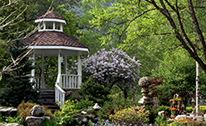 |
|
Herbnara Farm
Herbnara Farm, opened in 1994, has almost 100 kinds of herbs covering a total area of 12 k㎡. It consists of seven theme gardens, ponds and galleries including the Herb Garden, Children Garden, Fragrance Garden, and Water Garden. The uniquely decorated buildings and signs make visitors feel as if they are living in a fairy tale. Inside the farm, there are several spots for taking photos alongside the herbs; descriptions and effects are posted at each herb patch. |
|
|
|
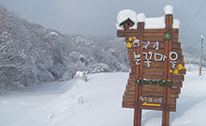 |
|
Daegwanryeong Snow Town
The Daegwallyeong Snow Town is in the area of Dagwallyeong, will celebrate the 2018 Winter Olympic which will be held in Pyeongchang-si, Gwangwon-do. There will be a large variety of attractions. Visitors can also visit a sheep ranch in a nearby village, enjoy many leisure sports, and try out the traditional method of roasting pollack. |
|
|
|
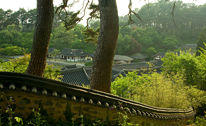 |
|
Gangneung Seongyojang (Korea Traditional Cultural Experience)
Seongyojang is the former upper class residence of the Naebeon Lee (1703-1781) noble family of Gangneung-si, Gangwon-do Province. It was designated Important Folklore Material No. 5 in 1967. The meaning of "Seon", in Seongyojang, is boat. Gyeongpo Lake was directly in front of Seongyojang at the time it was built, thus making is accessible by boat. Gyeongpo Lake at one time reached the enormous circumference of 12km. Its size has reduced by 4km over the years and its depth has decreased by 1-2 meters. |
|
|
|
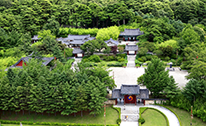 |
|
Ojukheon
The Ojukheon House (오죽헌) gets its name from the many black bamboo trees that surround it. It was here where Sinsaimdang (1504~1551) lived and where his son Yulgok (scholar and politician of the Joseon Period) was born. It was built during the time of the 11th King of Joseon, King Jungjong (1506~1544), and remains one of the oldest wooden residential buildings in Korea. It was designated as Treasure No. 165 in 1963 and has been maintained by the descendants throughout the generations. |
|
|
|
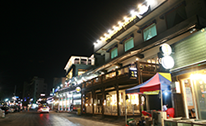 |
|
Anmok Beach Coffee Street
Anmok Beach spans over 150 km in length and covers an area of 20,000㎡. The beach is often packed with families on a vacation. Right in front of the beach is Anmok Port, where around 23 fishing boats can be moored to unload their catch of seaweed in the spring; flatfish, squid, octopus in the summer; and sailfin sandfish, and pollack in the fall and winter. The place has also gotten more popular because of the coffee geori (coffee street) that sells coffee at reasonable prices. |
|
|
|
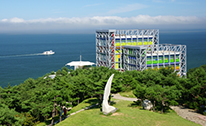 |
|
Haslla Art World
Covering an area of 61 acres, Haslla Art World gets its name ‘Haslla’ from Gangneung of the Shilla Era. Formed by applying to its natural features, the Art Garden contains the Pine Tree Garden, Time Hall, Wetlands, Field Garden, Sea Garden and Fun Garden. At the Fun Garden located by the sea, artists and visitors can talk about artwork placed here, as well as gaze at the clear view of the sea. There is also a study room where children experience the making of artwork and observe nature, as well as try to make sotdae (a Korean folk item, a pole, which is set up for prayer or celebration). A full tour takes about an hour and 30 minutes to two hours and 30 minutes. |
|
|
|
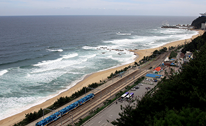 |
|
Sea Train
The Sea Train is a tourist train, traveling over 58km and connecting Gangneung, Donghae, and Samcheok. Running along the beautiful East Coast, every seat is tailored to see the ocean and windows are larger than those in regular trains for visitors to overlook the majestic waves, elegant beaches, and the emerald-blue ocean. Revamping three passenger cars, the Sea Train boasts a unique façade, seamlessly intermingling with the surrounding coast. |
|
|
|
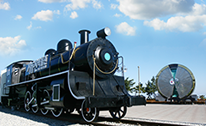 |
|
Jeongdongjin
The nice, sandy beach stretches over 250m and has three major swimming spots: in front of Jeongdongjin Railway Station, at Moraeshigae Park, and at the Jeongdongjin Seawalls. The spots near the railway station and at the park are more popular because they are spacious and easy to reach, with Moraeshigae Park having the added bonus of welcoming swimmers both day and night. Numerous rocks in front of Jeongdongjin Railway Station are home to shellfish, mussels, sea urchins and sea mustard. |
|
|
|
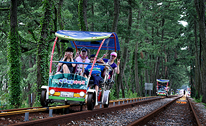 |
|
Samcheok Ocean Railbike
Samcheok Ocean Railbike is a four-wheeled bike on a 5.4㎞ rail that lies against a splendid backdrop of East Sea. Along the rail are Gungchon and Yonghwa Stations as rest stops, an observatory lounge, an ocean tunnel, and many more attractions. Since each bike has safety installations (double breaks, safety bars, etc.), it can be enjoyed by the whole family. |
|
|
|























